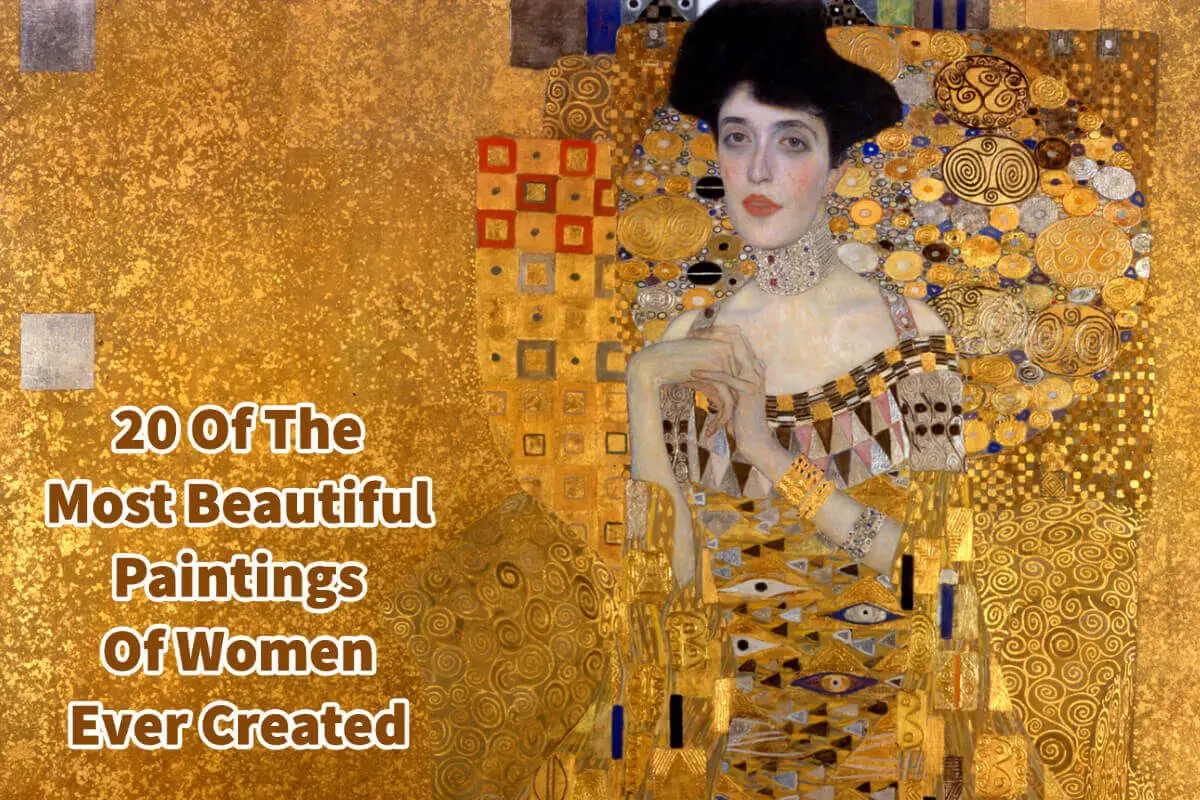The portrayal of women has long been a captivating and cherished subject in the annals of art history. From the hands of renowned male painters to the brushstrokes of influential female artists, the depiction of women has yielded a rich tapestry of remarkable and celebrated works of art.
Join us on an enchanting voyage as we delve into the realm of art, exploring and appreciating 20 masterfully crafted paintings that celebrate the timeless allure and artistic inspiration derived from the female form. These carefully selected works are a testament to the profound beauty and captivating artistry that radiates from each brushstroke. As we embark on this journey, prepare to be mesmerized by these masterpieces’ sheer brilliance and diversity, carefully chosen as personal favorites that have left an indelible mark on the art world.
Table of Contents
- Our Top Picks Of 20 Of The Most Beautiful Paintings Of Women Ever Created
- Girl with the Pearl Earring – Johannes Vermeer (1665)
- Mona Lisa – Leonardo da Vinci (1506)
- The Birth of Venus – Sandro Botticelli (1484 – 1486)
- Portrait of Adele Bloch-Bauer I – Gustav Klimt (1907)
- Portrait of Madame X – John Singer Sargent (1884)
- Woman with a Parasol – Claude Monet (1875)
- Whistler’s Mother – James Abbott McNeill Whistler (1871)
- Self Portrait with Thorn Necklace – Frida Kahlo (1940)
- Lady with Fan – Gustav Klimt (1918)
- Portrait of Dora Maar – Pablo Picasso (1937)
- Lady with Ermine – Leonardo da Vinci (1483)
- Woman I – Willem de Kooning (1952)
- The Cup of Tea – Mary Cassatt (1879)
- Woman Reading – Henri Matisse (1894)
- La Japonaise: Woman Beside the Water – Henri Matisse (1905)
- Olympia – Édouard Manet (1863)
- Self-Portrait as the Allegory of Painting – Artemisia Gentileschi (1639)
- Olga in an Armchair – Pablo Picasso
- Portrait of Edith Schiele, the Artist’s Wife – Egon Schiele (1915)
- When Will You Marry? – Paul Gauguin (1892)
- Frequently Asked Questions
- Related Questions
Our Top Picks Of 20 Of The Most Beautiful Paintings Of Women Ever Created
Throughout art history, the depiction of women has been a subject of fascination and inspiration for artists. From famous male painters to influential female artists, the portrayal of women has produced some of the most remarkable and celebrated works of art.
Read on as we will explore 20 of the most beautiful paintings of women ever created. Each of these masterpieces possesses unique qualities and captivates viewers with its timeless beauty and significance.
Girl with the Pearl Earring – Johannes Vermeer (1665)

Johannes Vermeer’s “Girl with the Pearl Earring” is a captivating portrait that has intrigued viewers for centuries. The subtle play of light and shadows, combined with the enigmatic expression of the young woman, creates an aura of mystery and allure.
This painting is considered a classic work of art due to its masterful execution and the mesmerizing presence of the subject.
Mona Lisa – Leonardo da Vinci (1506)
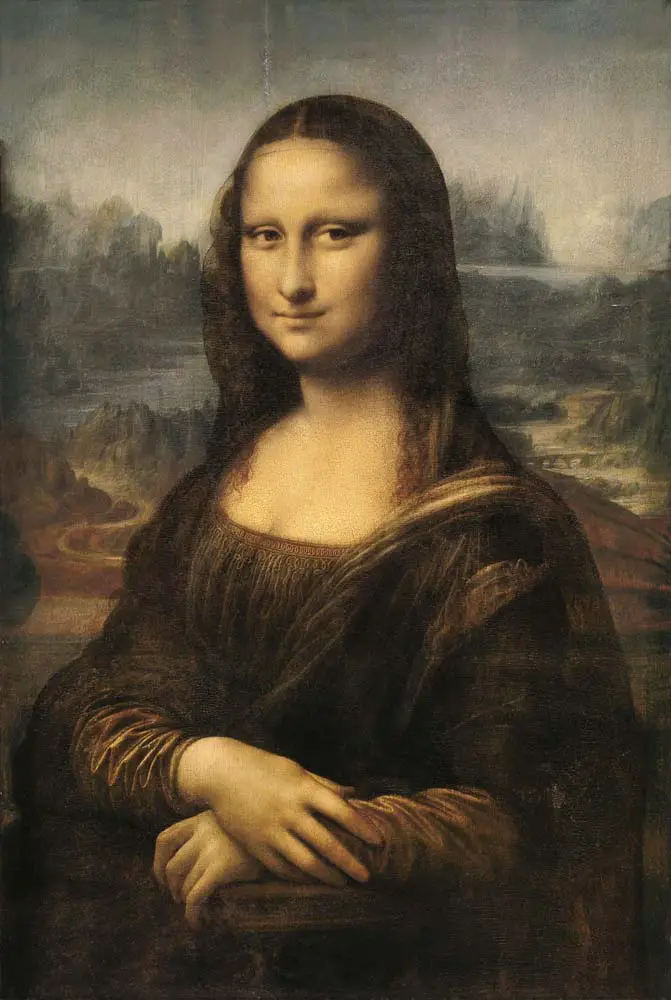
Leonardo da Vinci’s “Mona Lisa” is perhaps the most famous painting in the world. The enigmatic smile of the subject and the intricate details of the landscape in the background have captivated audiences for centuries.
The painting’s importance lies in its innovative techniques, including the sfumato technique and the delicate portrayal of human emotions, which revolutionized the art world.
The Birth of Venus – Sandro Botticelli (1484 – 1486)
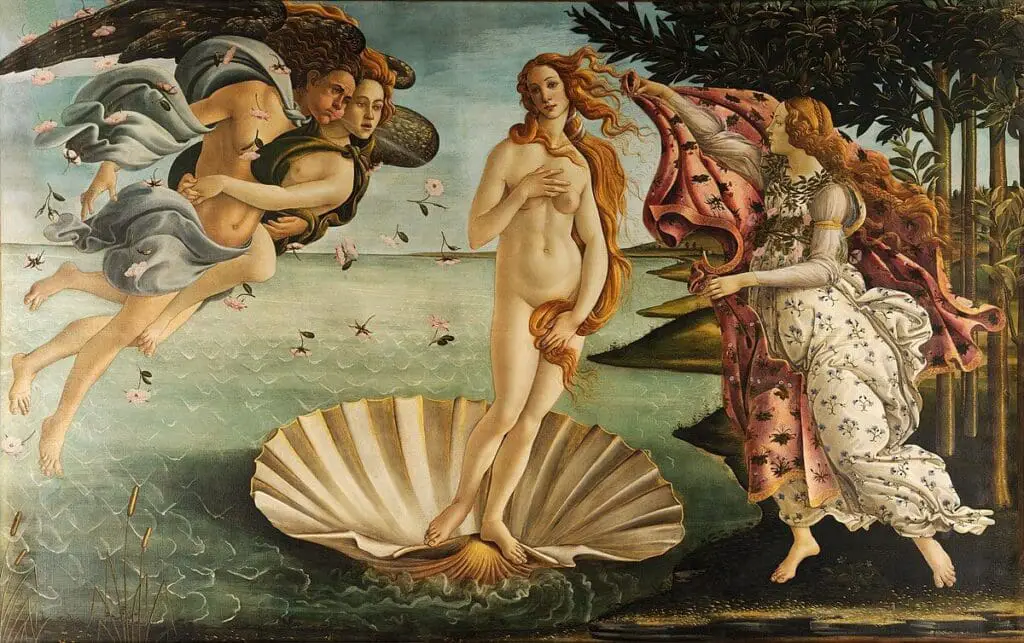
Sandro Botticelli’s “The Birth of Venus” is a triumph of Renaissance art. Depicting the birth of the goddess Venus from a seashell, this painting showcases Botticelli’s exceptional skill in portraying the female form.
The graceful movements and ethereal beauty of Venus make this artwork a classic representation of feminine grace and elegance.
Portrait of Adele Bloch-Bauer I – Gustav Klimt (1907)
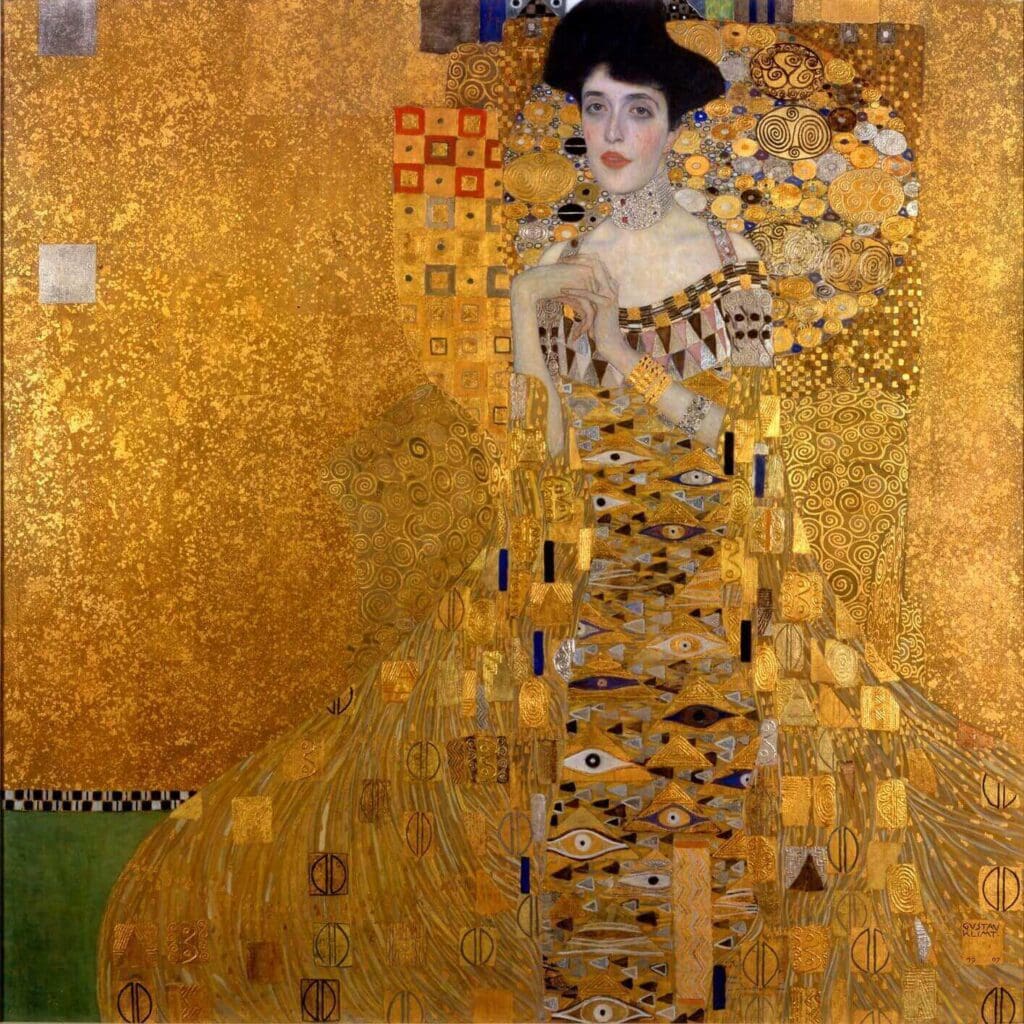
Gustav Klimt’s “Portrait of Adele Bloch-Bauer I” is a stunning example of his decorative and symbolic style. Using gold leaf and intricate patterns creates a sense of opulence and grandeur.
This painting is significant because it captures the essence of Adele Bloch-Bauer, a prominent figure in Viennese society, and embodies Klimt’s exploration of female identity and beauty.
Portrait of Madame X – John Singer Sargent (1884)
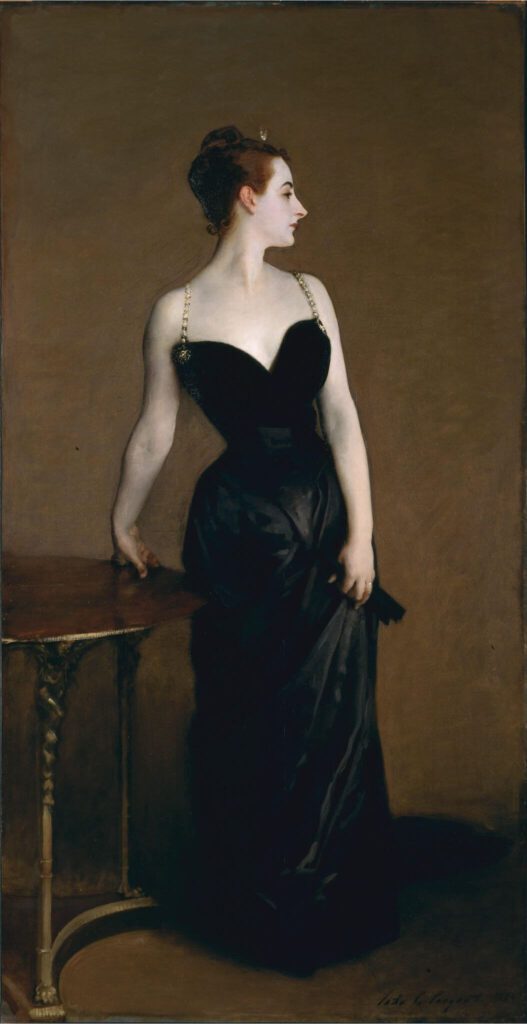
John Singer Sargent’s “Portrait of Madame X” caused a stir when unveiled due to its daring depiction of a beautiful and confident woman. The provocative pose and the revealing dress challenged the societal norms of the time.
This painting is important for its contribution to the evolution of portraiture, pushing boundaries and redefining the concept of female beauty.
Woman with a Parasol – Claude Monet (1875)
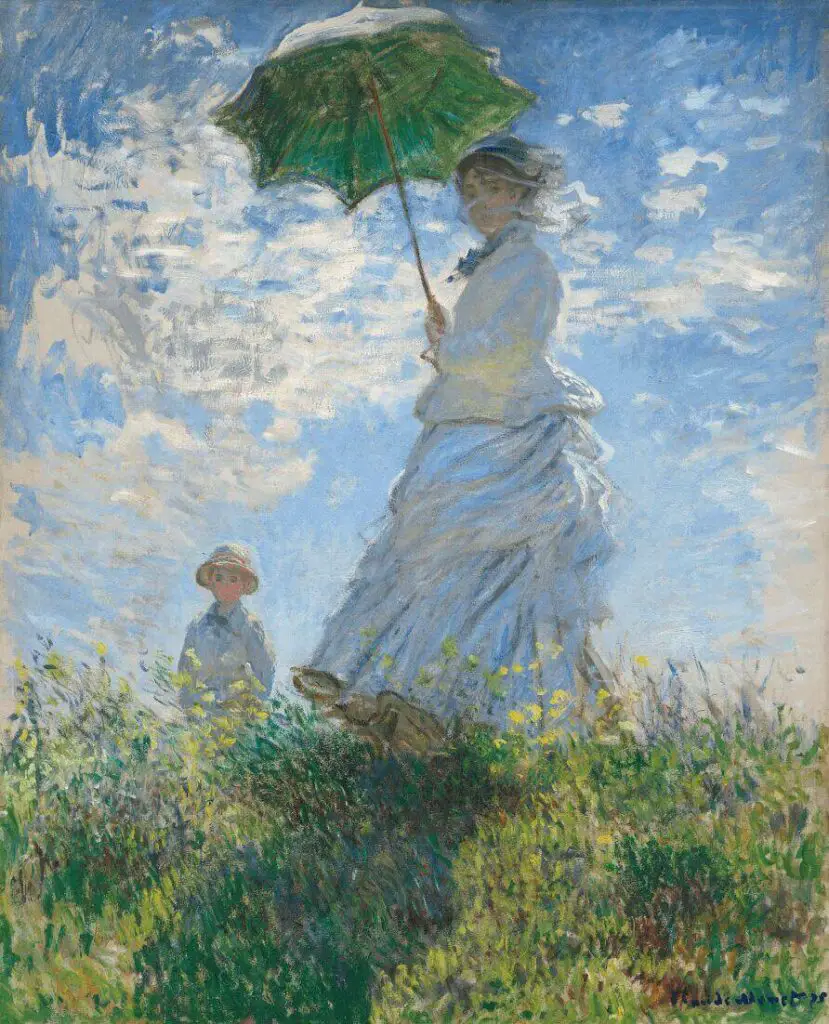
Claude Monet’s “Woman with a Parasol” exemplifies the Impressionist style and captures a serene and idyllic moment. The vibrant colors and loose brushstrokes convey the fleeting nature of light and atmosphere.
This painting is celebrated for its ability to evoke a sense of joy and tranquility and its portrayal of a woman enjoying the beauty of nature.
Whistler’s Mother – James Abbott McNeill Whistler (1871)
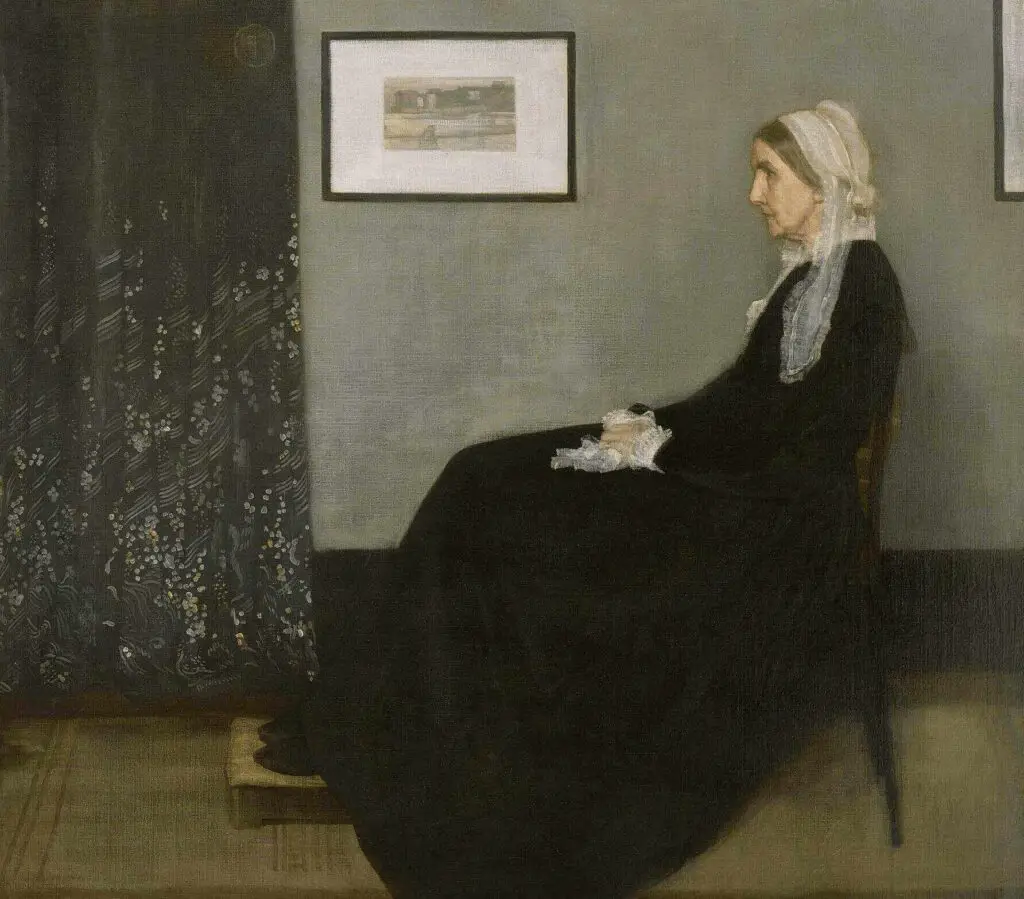
James Abbott McNeill Whistler’s “Whistler’s Mother” is an iconic portrait that epitomizes maternal love and tenderness. The monochromatic palette and the sitter’s dignified pose convey a sense of quiet strength and resilience.
This painting is considered a classic work of art for its ability to evoke universal emotions and its timeless portrayal of the maternal bond.
Self Portrait with Thorn Necklace – Frida Kahlo (1940)
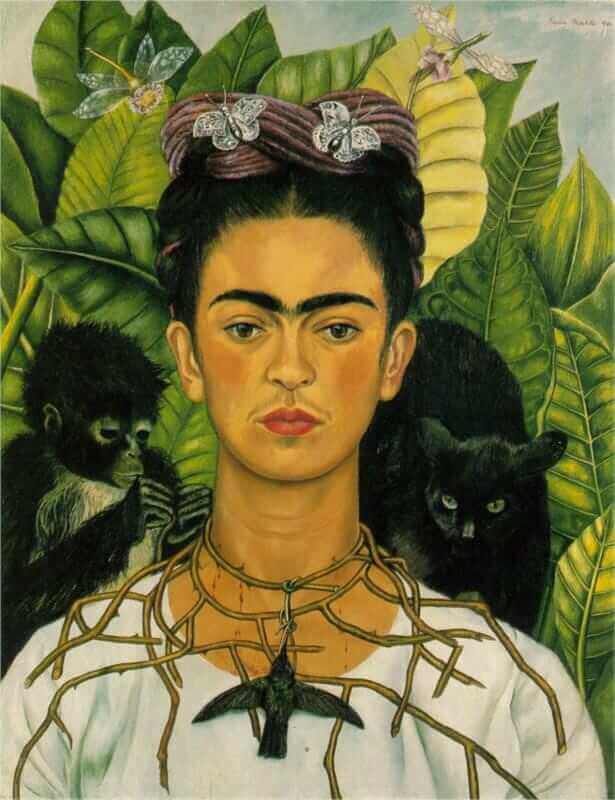
Frida Kahlo’s “Self Portrait with Thorn Necklace And Hummingbird” is a powerful and reflective depiction of the artist herself. Through this painting, Kahlo explores pain, identity, and resilience themes.
The thorn necklace symbolizes the physical and emotional suffering she endured. This self-portrait is essential because it reveals Kahlo’s ability to channel her personal experiences into art, creating a visual narrative that resonates with viewers profoundly.
Lady with Fan – Gustav Klimt (1918)

Gustav Klimt’s “Lady with Fan” showcases his mastery of capturing the sensuality and allure of the female form. The ornate patterns and shimmering colors in the background, combined with the subject’s captivating gaze, create an aura of mystery and elegance.
This painting contributes to Klimt’s exploration of feminine beauty and his ability to infuse his subjects with intrigue and mystique.
Portrait of Dora Maar – Pablo Picasso (1937)

Pablo Picasso’s “Portrait of Dora Maar” is a mesmerizing and multifaceted depiction of his muse and lover. Picasso conveys the complexities of Maar’s personality and emotions through his characteristic Cubist style.
This painting is considered a classic work of art because it exemplifies Picasso’s revolutionary approach to portraiture and his ability to capture the inner world of his subjects.
Lady with Ermine – Leonardo da Vinci (1483)
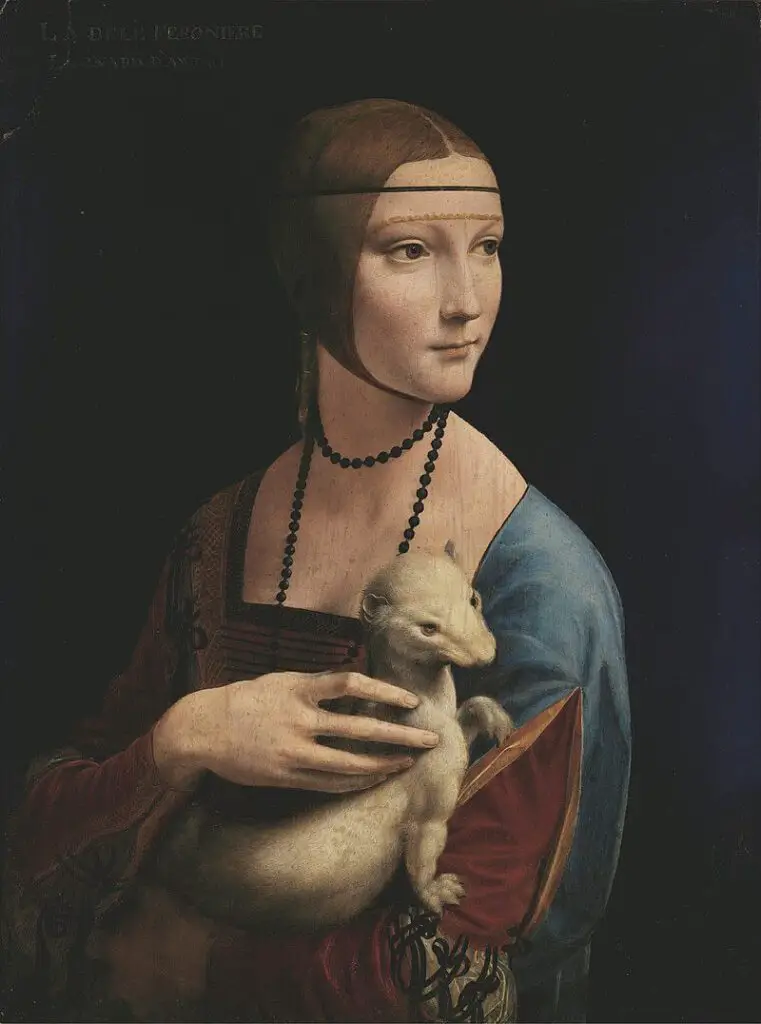
Leonardo da Vinci’s “Lady with Ermine” is a masterful portrait that showcases his unparalleled skill in capturing the human form. The enigmatic expression and the delicate rendering of the fur and fabrics demonstrate da Vinci’s attention to detail and ability to convey realism.
This painting is significant for its technical brilliance and portrayal of the subject’s grace and elegance.
Woman I – Willem de Kooning (1952)

Willem de Kooning’s “Woman I” is a striking and expressive abstract painting that challenges traditional notions of beauty. The bold brushwork and dynamic composition convey a sense of raw emotion and intensity.
This painting is significant because it represents the artist’s exploration of the female form, blurring the boundaries between figuration and abstraction.
The Cup of Tea – Mary Cassatt (1879)
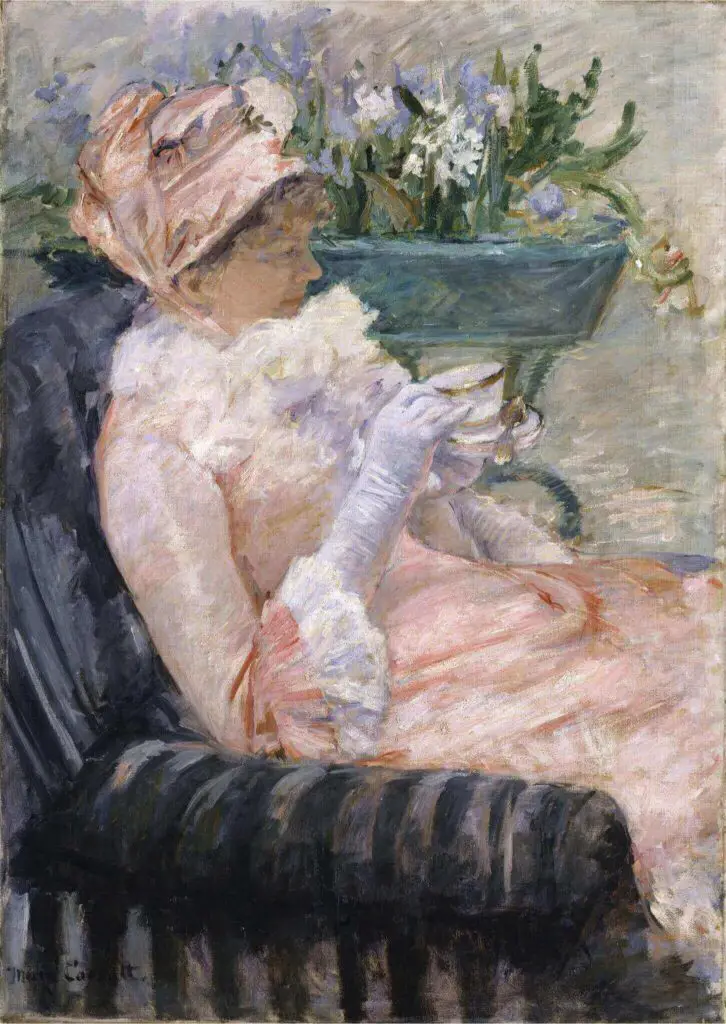
Mary Cassatt’s “The Cup of Tea” is a tender and intimate portrayal of a woman engaged in a quiet moment of reflection. Cassatt, a prominent Impressionist painter, was known for depicting women in everyday settings.
This painting is significant for its contribution to the representation of women in art and its celebration of domestic scenes as worthy subjects of artistic expression.
Woman Reading – Henri Matisse (1894)
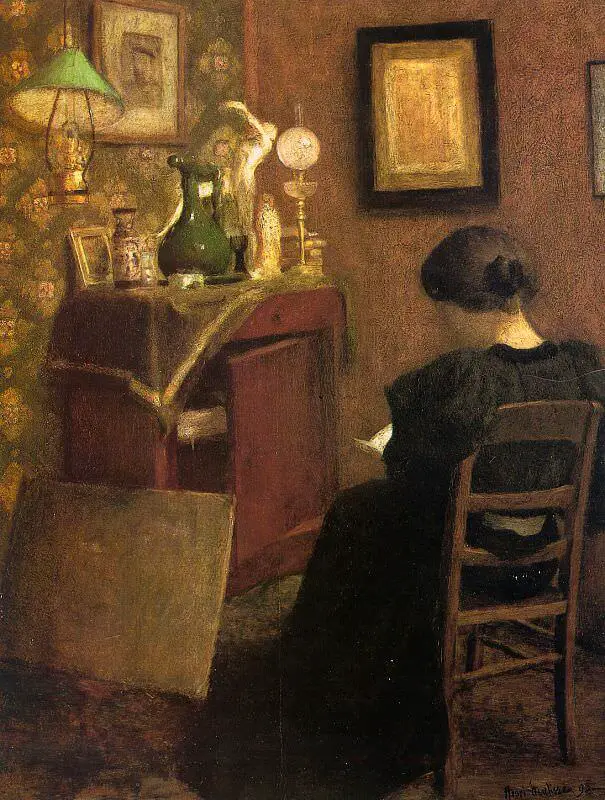
Henri Matisse’s “Woman Reading” captures a serene and contemplative moment in a woman’s private world. The vibrant colors and simplified forms reflect Matisse’s exploration of Fauvism, a movement characterized by its bold use of color and simplified shapes.
This painting is celebrated for its ability to convey a sense of tranquility and introspection.
La Japonaise: Woman Beside the Water – Henri Matisse (1905)
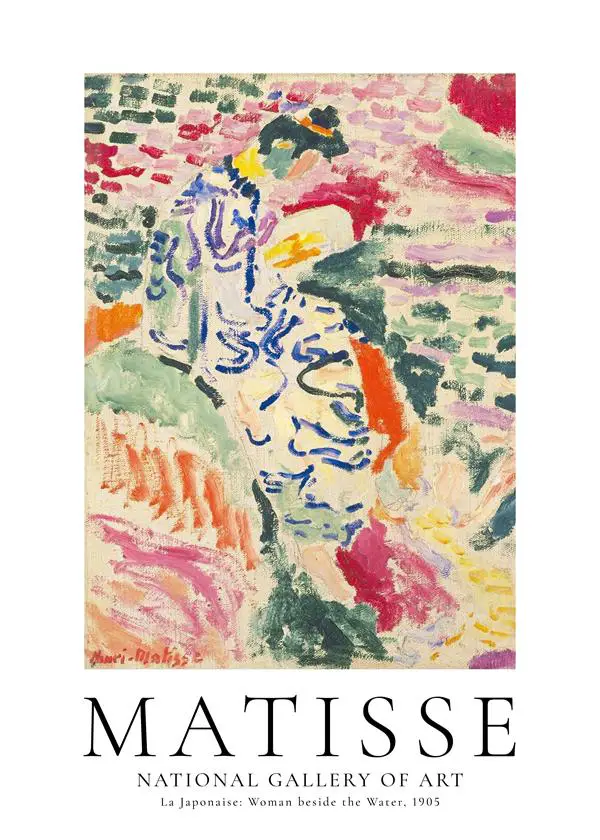
Henri Matisse’s “La Japonaise: Woman Beside the Water” portrays a woman in a vibrant Japanese-inspired costume. The bold colors and intricate patterns reflect Matisse’s fascination with non-Western cultures.
This painting is significant for its innovative approach to color and design and its exploration of cultural identity and artistic inspiration.
Olympia – Édouard Manet (1863)

“Olympia” by Édouard Manet is a groundbreaking and controversial painting that challenged societal conventions of the time. Depicting a reclining nude woman, Olympia’s direct gaze and confident posture defy traditional notions of modesty and passivity.
This painting caused a scandal when it was first exhibited, as it confronted viewers with the reality of a woman asserting her agency and challenging the male gaze. Olympia” is considered a classic work of art for its audacity in tackling societal taboos and initiating a new era in the representation of the female form.
Self-Portrait as the Allegory of Painting – Artemisia Gentileschi (1639)
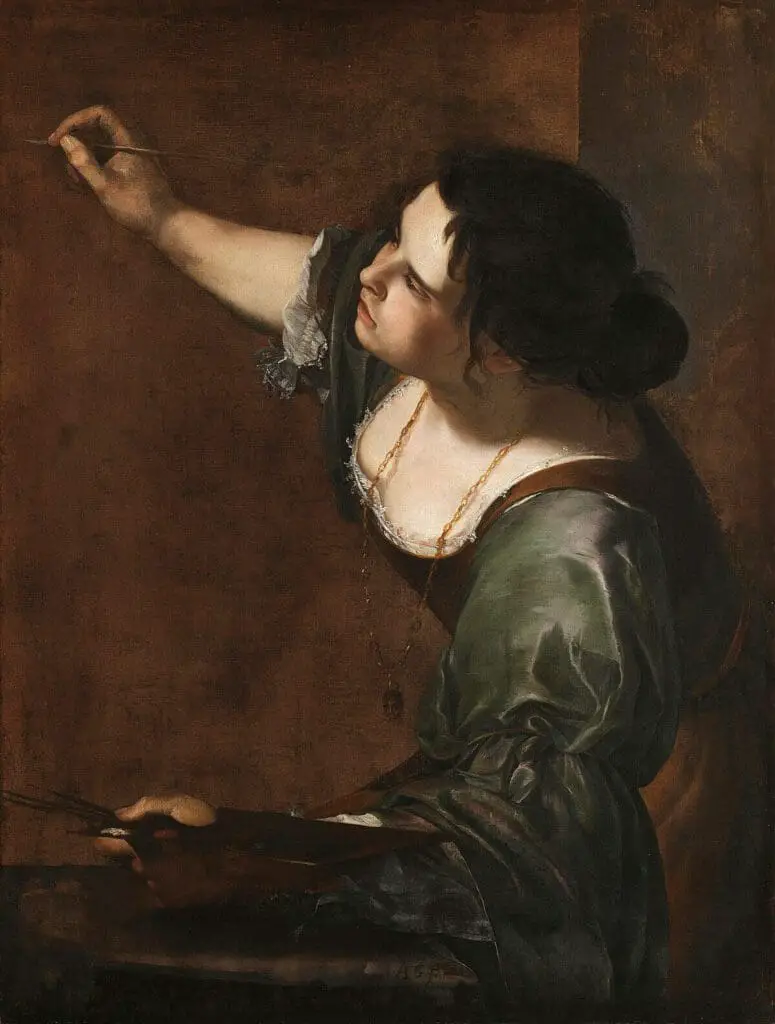
Artemisia Gentileschi’s “Self-Portrait as the Allegory of Painting” is a remarkable self-portrait that showcases the artist’s technical skill and determination. As one of the few successful female artists of her time, Gentileschi defied societal expectations and achieved recognition for her talent.
This painting is significant for it represents a female artist confidently presenting herself as the embodiment of the art form, asserting her place in a male-dominated art world.
Olga in an Armchair – Pablo Picasso

Olga in an Armchair” by Pablo Picasso is a captivating portrait of his first wife, Olga Khokhlova. The painting reflects Picasso’s transition from Cubism to a more classical style influenced by neoclassical art.
The composition and color palette evokes a sense of calm and elegance, capturing Olga’s grace and poise. This painting is significant for depicting a pivotal period in Picasso’s artistic evolution and portraying a muse who played a significant role in his life.
Portrait of Edith Schiele, the Artist’s Wife – Egon Schiele (1915)

Egon Schiele’s “Portrait of Edith Schiele, the Artist’s Wife” is an intimate and dynamic depiction of his wife, Edith. Known for his provocative and psychologically charged artworks, Schiele’s portrayal of Edith in this painting is tender and heartfelt—the expressive lines and muted yet bright color palette capture Edith’s vulnerability and the depth of their connection.
This painting is significant for its portrayal of love and the artist’s ability to convey complex emotions through his distinctive style.
When Will You Marry? – Paul Gauguin (1892)
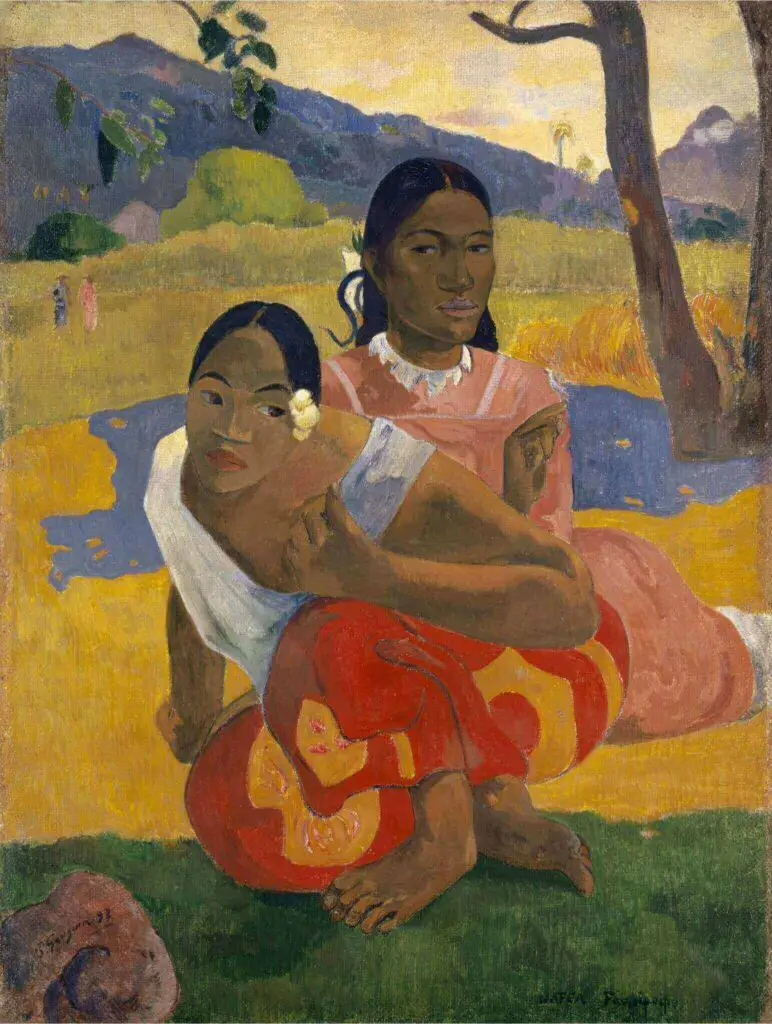
When Will You Marry?” by Paul Gauguin is a vibrant and exotic painting inspired by his travels to Tahiti. The artwork features a Tahitian woman surrounded by lush tropical foliage, reflecting Gauguin’s fascination with the exotic and his idealized vision of the South Pacific.
This painting is significant for exploring cultural identity, colonialism, and the artist’s search for a romantic paradise. It represents Gauguin’s unique artistic vision and desire to escape Western society’s constraints.
Each of these 20 paintings holds its allure and significance in art history. From the enigmatic smile of Mona Lisa to the daring portrayal of Olympia, these works have stood the test of time and continue to captivate viewers with their beauty, innovation, and ability to transcend societal norms.
Through these masterpieces, we witness the evolution of artistic techniques, the exploration of human emotions, and the celebration of feminine grace and strength. These paintings represent the power of art to capture the essence of women and serve as timeless reminders of their resilience, beauty, and profound impact on the world of art.
Anita Louise Art is dedicated to art education, great artists, and inspiring others to find and create their art. We love art that uplifts and inspires. #ArtToMakeYouSmile! #ArtToMakeYouHappy!
If you want to see any of my art, you can find out more by clicking here. If you are interested in what inspires me and my paintings, you can discover more by clicking here.
We have a free newsletter and would love you to be part of our community; you can subscribe to the newsletter by clicking here. If you have any questions, I would be happy to talk to you. You can reach me, Anita, by clicking here.
Subscribe to our Anita Louise Art YouTube Channel with great videos and information by clicking here.
Join us for our podcast “5 Minutes With Art.” Spend 5 minutes a week with us to discover and learn about great art and artists. You can find out more about our podcast by clicking here.
Frequently Asked Questions
What makes the portrayal of women a timeless and cherished subject in the history of art?
The portrayal of women in art has been a subject of enduring fascination. Artists throughout history have found inspiration in the female form, capturing its beauty, complexity, and emotive qualities. This enduring fascination stems from the diversity of interpretations and the ability of art to transcend cultural and temporal boundaries.
Who are some of the influential artists, both male and female, who have contributed to the rich tapestry of paintings featuring women?
Explore the works of renowned artists such as Leonardo da Vinci, Johannes Vermeer, Frida Kahlo, and Mary Cassatt, among others. Each artist brings a unique perspective to the portrayal of women, showcasing the breadth of artistic talent and cultural influences.
What qualities make a painting stand out as a masterful celebration of the female form?
Masterfully crafted paintings go beyond mere representation; they encapsulate the essence of the subject. Look for works that skillfully convey emotion, intricate details, and a profound understanding of anatomy. These qualities contribute to the enduring allure of paintings featuring women.
How have societal perceptions of women influenced the art world, and vice versa?
Art reflects and shapes societal attitudes. Explore the reciprocal relationship between societal norms and artistic depictions of women. Consider how these paintings have contributed to, challenged, or reinforced prevailing ideas about femininity and beauty.
Can you provide insights into the cultural and historical contexts that influenced the creation of these paintings?
Each painting is a product of its time, influenced by cultural, social, and historical contexts. Gain a deeper appreciation for the nuances of these masterpieces by understanding the prevailing ideals, values, and artistic movements that shaped their creation.
In what ways do these paintings showcase the diversity of artistic styles and techniques employed to portray women?
Appreciate the variety of artistic styles, from the classic realism of the Renaissance to the vibrant surrealism of the 20th century. Understand how artists experimented with techniques and styles to capture the beauty of the female form in diverse and innovative ways.
How do these paintings transcend mere physical beauty to convey deeper emotions and narratives?
Beyond aesthetics, many paintings tell stories, convey emotions, or symbolize broader themes. Explore the narratives within these artworks, deciphering the layers of meaning that add depth to the portrayal of women.
Are there any recurring themes or symbols in these paintings that contribute to their collective impact?
Identify common motifs or symbols that artists employ to convey specific messages or evoke emotions. Understanding these recurring themes enhances the viewer’s appreciation of the collective impact of these paintings.
How have contemporary artists continued to contribute to the tradition of portraying women in art?
Delve into the works of contemporary artists who build upon the legacy of their predecessors. Explore how these artists reinterpret traditional themes or introduce new perspectives, reflecting the evolving nature of societal attitudes towards women.
Can you recommend resources for further exploration and appreciation of paintings featuring women?
Expand your knowledge by exploring art history books, online galleries, and exhibitions dedicated to the portrayal of women in art. Engage with scholarly discussions and critical analyses to deepen your understanding and appreciation of this captivating subject in the world of art.
Related Questions
The Ten Most Famous Paintings: A Journey In Artistic Triumphs
We have gone through the list of all the important paintings and listed what we see as the 10 most important ones. Many on this list are very famous as the Mona Lisa. Others include one of my favorite American paintings of the American Gothic. Read on as we explore what we see as ten of these most essential paintings ever created.
By clicking here, you can learn more by reading The Ten Most Famous Paintings: A Journey In Artistic Triumphs.
Why Is The Chinese Artist Ai Wei Wei So Famous? 7 Reasons Why
Ai Wei Wei is a highly captivating artist who produces amazing art installations. His art speaks of political activism as he places himself in the middle of world events. He uses Chinese art forms in his art, along with photography and video.
By clicking here, you can learn more by reading Why Is The Chinese Artist Ai Wei Wei So Famous? 7 Reasons Why.
21 Top Renaissance Artists And Their Works Of Art
When we speak of top Renaissance artists, we think of the trinity of artists like Leonardo da Vinci, Michelangelo, and Raphael. But besides these three artists, many other influential Renaissance artists remain essential.
By clicking here, you can learn more by reading 21 Top Renaissance Artists And Their Works of Art.

